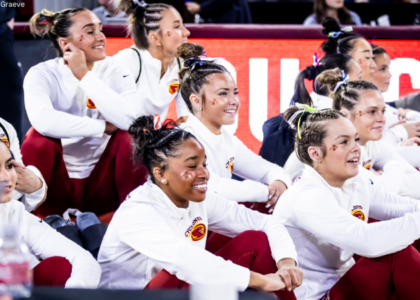We are so excited to share our meet predictor for the 2024 season! Coding is hard, so our data team broke down how our meet predictor was made below to share more insight into how the model works.
The predictor starts with tagging gymnasts with relevant values, such as their injury and year. We then load in Road to Nationals data to provide our scoring figures, including meet info such as home/away sites and opponents, for use in the prediction model.
After the necessary traits and scores are loaded in for both teams and individual gymnasts, we use different functions to carry out the prediction process. Our team scores function takes both past scores and a multiplier to introduce variability into the predictor model (so we don’t get the same result every time). It then creates a lineup of six gymnasts based off their past scores and generates new “predicted” scores for them. Again, a multiplier is added so we get variation in scores and don’t end up with the same scoring lineup over and over. This is done for each event for each team competing, making sure that each lineup has six gymnasts and that their scores max out at a perfect 10.
Then, this data is loaded in to a get meet prediction function that sums up the scores and determines the placement of the teams to successfully make up, or predict, a meet!
Finally, our model takes these functions and uses them to predict the scores for any specific meet. The model adds an extra (but smaller) multiplier to add variability for the team scores, since it’s no fun to predict a meet over and over and get the same result. This also allows us to compute the probability of a team winning: If we run the same model 10, 100, or 1000 times, who ends up on top the most?
For each meet, the model runs 10,000 times by using the team scores function to simulate the meet by generating scores for each team on each event then the get meet prediction function to calculate the results and tell us which team has the highest probability of coming out on top. For example, we simulated the week one matchup between Nebraska and Iowa State 10,000 times, and Nebraska won 85.74% of the time.
The Mount will highlight our most interesting or relevant results from our meet predictor runs every week, and you can check out our social platforms to see interesting tidbits and predictions for the rest of the week’s slate.
Article by Emma Hammerstrom and Claire Harmon




11 comments